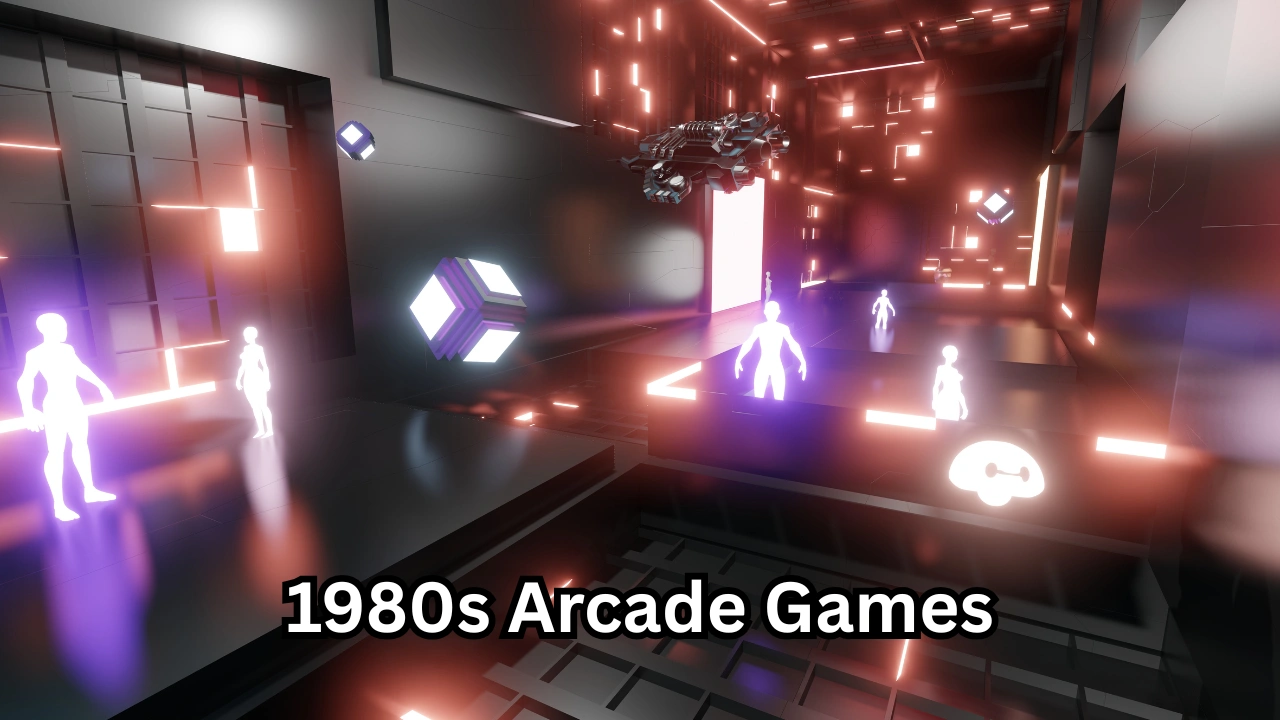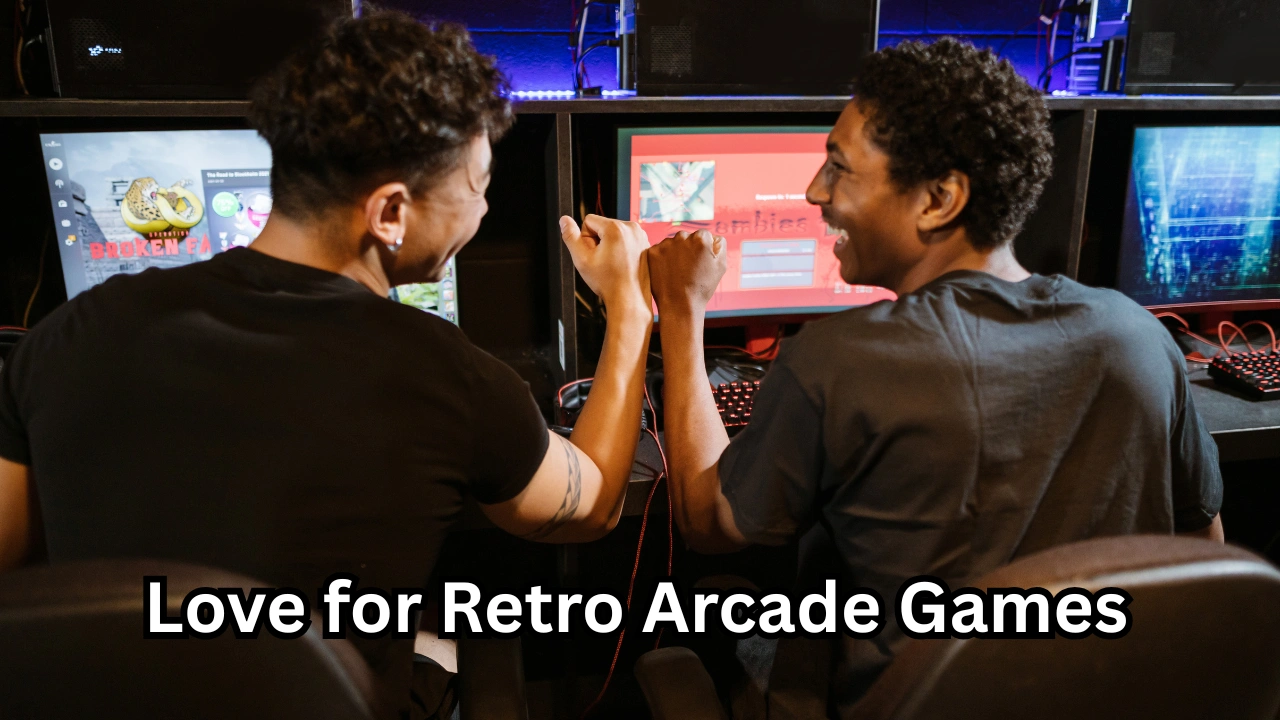1980s Arcade Games: The Rise and Fall of Retro Gaming

The 1980s arcade games era marked one of the most iconic periods in the gaming industry. Arcades became entertainment hubs where people of all ages enjoyed thrilling video game experiences. These coin-operated machines brought fun, competition, and a new way to socialize. They not only changed how we play games but also helped form the gaming culture we enjoy today.
Read more about games and marketplace of ubisoft and rainbow six siege at r6 ‘marketplace
What is 1980s Arcade Games?
1980s arcade games transformed the world of entertainment with simple controls, catchy music, and addictive gameplay. These games attracted millions of players to arcades and became a major part of pop culture during the decade. Characters like Pac-Man and Donkey Kong became icons that still influence gaming today.
The design of these games focused on fun, challenge, and high-score competition, keeping players engaged for hours. Their bright graphics and unique cabinets turned arcades into exciting social spots for gamers of all ages. Even now, the legacy of 1980s arcade games lives on through retro collections and modern adaptations.
How It All Began: The Boom of 1980s Arcade Games
The popularity of 1980s arcade games started with simple ideas and powerful execution. One of the earliest hits was Pac-Man, released in 1980. This game became a cultural symbol and set the stage for many other titles. People lined up at arcades to get their turn at these exciting machines. The success of Pac-Man led to more creative and engaging games like Donkey Kong and Frogger.
Arcade centers popped up everywhere—from malls to pizza shops. Players loved the idea of inserting a coin, beating high scores, and becoming local legends. These games were easy to start but hard to master. That made players keep coming back for more.
Also Read: Revolver Square Game A New Era in Pro Wrestling Events
Iconic Titles That Shaped a Generation
The 1980s introduced some of the most beloved and memorable games in history. These titles defined an entire generation and still influence game design today. Every game had unique visuals, sounds, and characters. Some of them even started famous franchises still going strong in modern times.
One standout was Donkey Kong (1981), where Mario made his first appearance. It mixed platforming with strategy, making it highly addictive. Another classic was Galaga, a space shooter that kept players hooked for hours. Frogger challenged players to cross busy roads and rivers, offering fun but difficult gameplay.
Games like Defender, Tempest, Asteroids, and Centipede added variety to the growing list. These games used simple graphics but delivered high-speed action and intensity. Players could challenge each other and try to beat top scores, which added a competitive spirit to the experience.
Why 1980s Arcade Games Were So Popular
1980s arcade games succeeded because they delivered instant fun and competition. The controls were simple—usually just a joystick and a few buttons. Anyone could start playing within seconds. The challenge came from mastering the game and achieving the highest score.
Most games had no pause button or save feature. If you lost all your lives, the game ended. That design pushed players to learn, adapt, and improve. This model made arcade games highly replayable.
Another reason for their popularity was social connection. Players would often gather around machines, cheer each other on, or wait their turn. This social aspect turned arcades into meeting places for friends and gamers alike.
The Technology Behind the Fun
Despite limited hardware, developers found smart ways to deliver great gameplay. Most 1980s arcade games used 8-bit processors and simple graphics chips. The animations looked basic compared to modern games, but they were enough to grab attention.
Some games introduced advanced features for their time. Dragon’s Lair used laserdisc video technology to play animated scenes. It looked more like a cartoon than a typical arcade game. Meanwhile, Track & Field used button mashing mechanics to simulate Olympic sports.
Arcade cabinets also featured unique designs. Each machine had custom artwork, sound effects, and controls. These designs made the games stand out visually and created a unique experience for every title.
Also Read: NYT Games Strike Timeline Events That Shaped the Walkout
Popular 1980s Arcade Games and Their Release Years
| Game Title | Year Released | Description |
|---|---|---|
| Pac-Man | 1980 | Maze game where you avoid ghosts and eat pellets |
| Donkey Kong | 1981 | Platform game introducing Mario |
| Galaga | 1981 | Space shooter with alien wave attacks |
| Frogger | 1981 | Help the frog cross roads and rivers |
| Defender | 1981 | Sci-fi shooter with side-scrolling gameplay |
| Tempest | 1981 | Vector-based tube shooter |
| Centipede | 1980 | Bug-blasting action using a trackball |
Cultural Impact of 1980s Arcade Games
The cultural effect of 1980s arcade games cannot be overstated. Characters like Pac-Man and Mario became instant celebrities. They appeared in cartoons, cereal boxes, and even music. Kids wore T-shirts with game logos, and arcades became places of wonder.
The games influenced movies and TV shows as well. Films like WarGames and Tron explored the idea of gaming and artificial intelligence. Music inspired by arcade sounds became popular, with artists using 8-bit tones in their songs.
More than entertainment, arcade games encouraged problem-solving and quick thinking. Many schools and educators began to see their potential in boosting focus and hand-eye coordination.
Rise of Home Consoles and The Fall of Arcades
By the late 1980s, things began to change. Home gaming consoles like the Nintendo Entertainment System (NES) allowed players to enjoy games from their couch. Families started investing in these consoles instead of going out to arcades. Although arcade games were still better in terms of graphics and sound, the gap was shrinking.
Even so, 1980s arcade games didn’t vanish completely. They remained part of malls, pizza shops, and amusement centers. But their dominance slowly declined as technology improved and home gaming grew.
Also Read: Repack Games Compressed Versions of Full Video Games
Comparison of Arcade Games vs Home Consoles in the 1980s
| Feature | Arcade Games | Home Consoles (NES, Atari) |
|---|---|---|
| Graphics | Higher resolution at launch | Lower, improved later in decade |
| Sound Quality | Superior with large speakers | Basic sound chips |
| Game Variety | Wide and changing regularly | Limited to available cartridges |
| Cost to Play | Coin-based per session | One-time game cartridge cost |
| Multiplayer | Available on some machines | Usually limited to two players |
Modern Love for Retro Arcade Games
In recent years, the world has rediscovered its love for retro games. Many gamers look back at 1980s arcade games with nostalgia. That has sparked a rise in retro gaming bars, vintage arcades, and emulator apps.
Manufacturers now sell mini versions of arcade cabinets with built-in games. These compact machines fit easily into homes and let players relive the magic of the past. Even modern game developers often create games inspired by the 1980s arcade style.

Some titles use pixel art and chiptune music to mimic the original feel. These features make players remember what made those games so enjoyable.
Also Read: JOI Game The Japanese Olympiad in Informatics for High School Coders
Lessons Learned from 1980s Arcade Games
Game designers still study 1980s arcade games to learn valuable lessons. These games proved that fun doesn’t require fancy graphics or long cutscenes. Simple mechanics, balanced difficulty, and player engagement matter more.
The focus on high scores and leaderboards still exists in today’s mobile games. Many smartphone games use arcade-style progression where the goal is to keep playing and improving.
Modern multiplayer games have also borrowed ideas from the 1980s. Cooperative play, competitive challenges, and limited lives all come from that original design approach.
Conclusion
1980s arcade games created a movement that shaped the entire gaming world. Their impact is still felt today in game design, art style, and gaming culture. These classics showed that you could entertain millions with a joystick, a few buttons, and a creative idea.
If you’ve never played these games, trying them now can be a rewarding experience. Whether it’s Pac-Man’s maze or Galaga’s space battles, the magic remains alive. They represent more than just old video games—they reflect the creativity and joy of a generation that changed entertainment forever.






